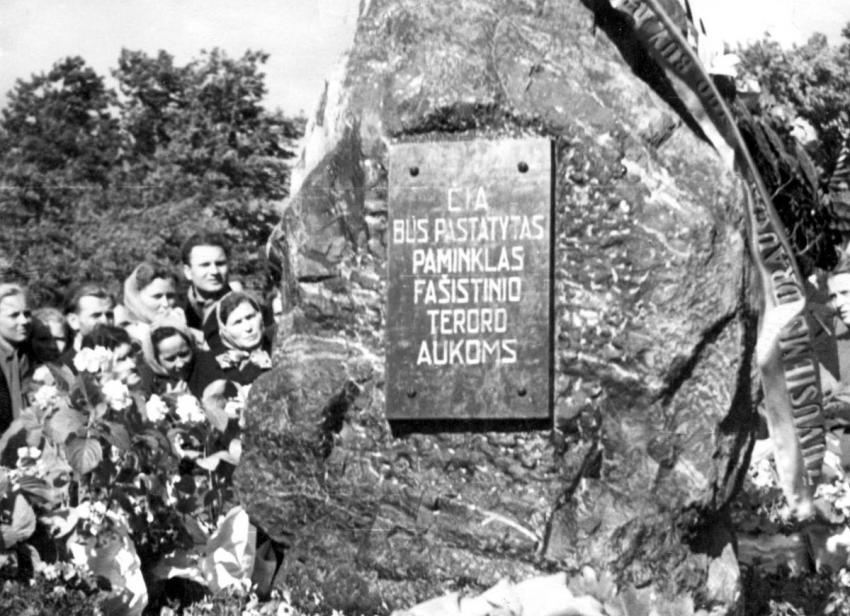On 5 November 1943, the “Children’s Aktion” began. The SS and Ukrainians encircled the ghetto, kidnapped 574 children and over 200 other Jews, most of them elderly. The adults were shot in a forest on the German border, while the children were deported to Auschwitz-Birkenau to be murdered. During the Aktion, the parents were told that their children were being moved to children’s homes in Germany, but as many did not believe the official explanation, two members of the Jewish committee – Bar Katon and Aaron Katz – accompanied the children so as to ascertain their fate. A similar roundup was carried out in the labor camps, and dozens of children, women and elderly people were deported to their deaths. 227 Jewish children under the age of 12 remained in Šiauliai, and a few dozen others in the labor camps – those whose parents had succeeded in hiding them from the Germans and the Ukrainians.
In the spring of 1944, as the front approached, preparations were made to liquidate the ghetto. At the beginning of July all the Jews still left alive in the labor camps were returned to Šiauliai, and Jewish labor outside the ghetto ceased. All exit permits from the ghetto were canceled. The SS commander of the ghetto now announced that anyone caught trying to escape would be murdered along with their entire family. During a Soviet bombing of the city, some of the ghetto’s residents were killed, among them the former head of the Jewish committee, Mendel Leibowitz.
In mid-July 1944, the remaining Jews in the Šiauliai ghetto were deported by train to the concentration camp of Stutthof, to labor camps across Poland and to concentration camps in the vicinity of Dachau in Germany. One group was deported to a concentration camp in Riga. Several dozen inmates succeeded in escaping from the ghetto or the labor camps, either before or during the deportation, whereupon they went into hiding or joined the partisans. Of the 3,000 Šiauliai Jews transferred to labor camps, only 500 survived to be liberated. A number of Jews from Šiauliai succeeded in escaping to the Soviet Union before the Nazi occupation began. They joined the Lithuanian Division of the Red Army (the 16th Division). In the bombings that preceded the fall of Šiauliai, the remains of the ghetto were burned.
After the Red Army liberated Šiauliai on the 27 July 1944, dozens of Jewish survivors returned to the city. They were joined by Jews who had escaped into the Soviet Union.
In the 1970s there were 800 Jews living in Šiauliai, most of whom spoke Yiddish. They constituted less than 1% of the city’s population. In 1994 there were 470 Jews in Šiauliai.
In 1991, a monument to the Jews of Šiauliai murdered during the Holocaust was erected in Holon, Israel. In Lithuania, a memorial to the Jews of Šiauliai has been established at the site of the entrance gate to the Traku quarter of the former ghetto.







